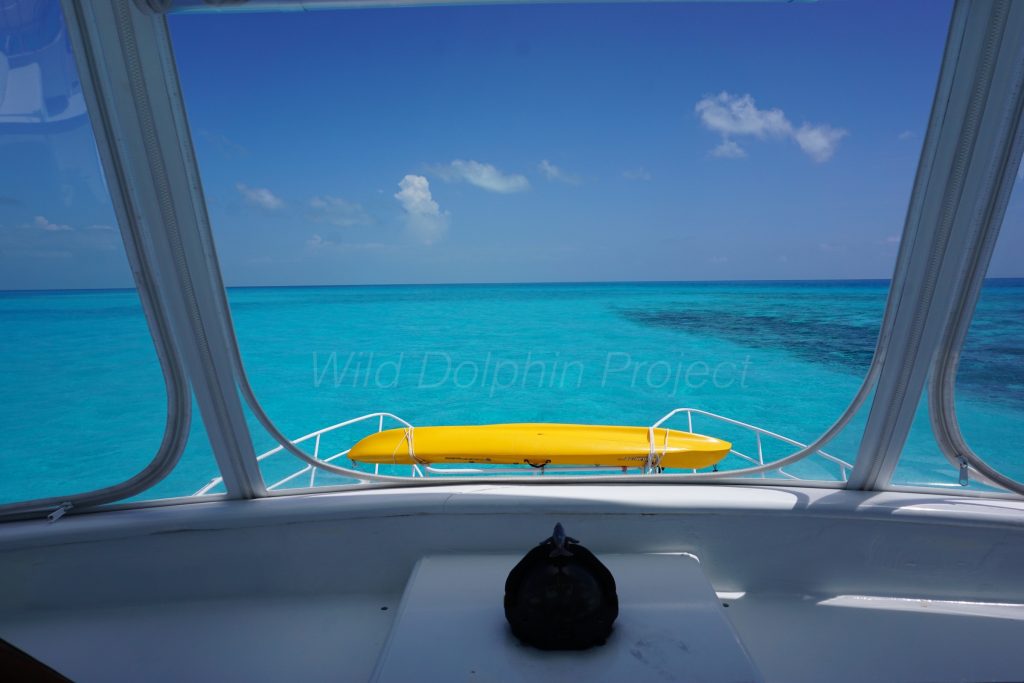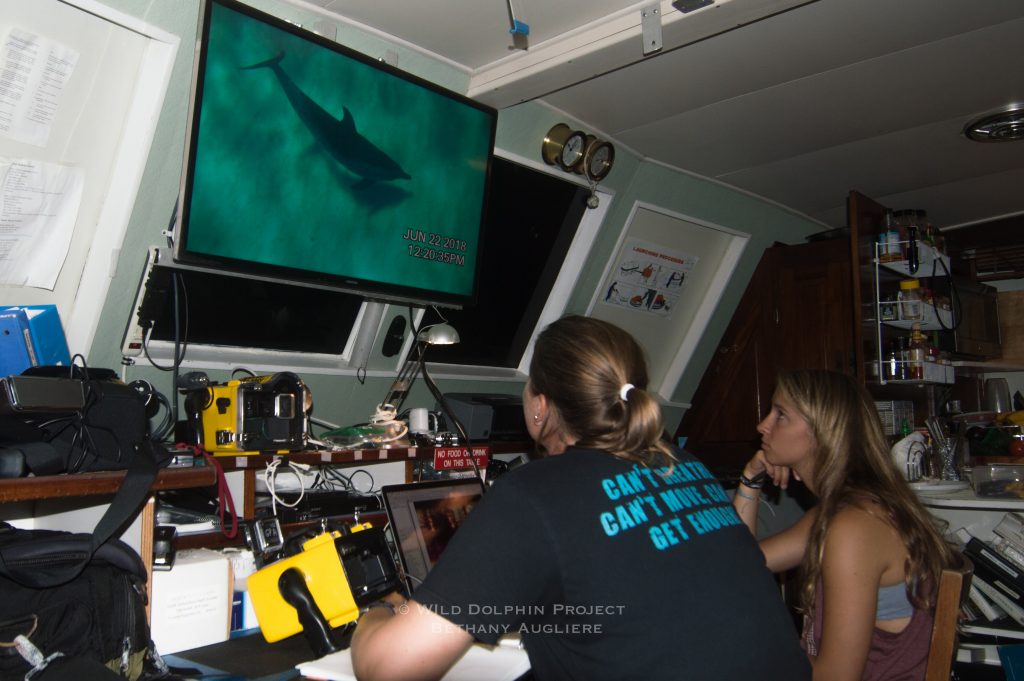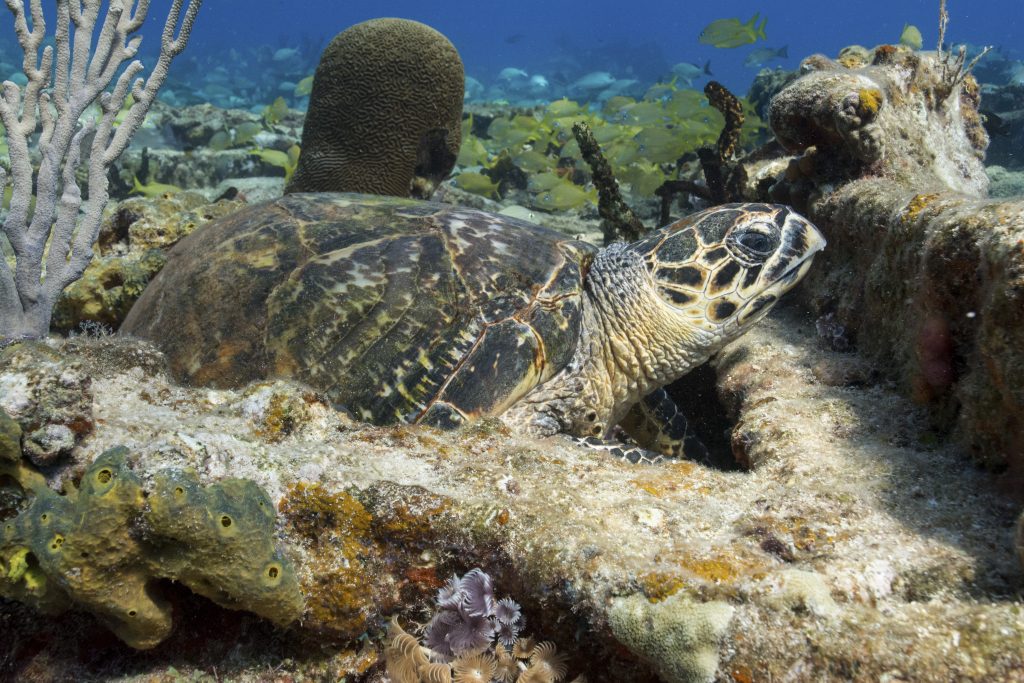When it comes to living at sea for dolphin research, there’s so much more than just being in the water with dolphins. We live at sea and experience everything that comes with that — from the intense sun and heat, severe weather events, beautiful sunsets, wildlife encounters and more.
In past blogs, we’ve shared a lot about our team members, our science, and the day-to-day operations of what it’s like to collect data and study dolphins. But what are the Bahamas like, and what happens during the time in between all that research? Do we ever have fun or get bored? Keep reading to find out!
The Islands
The Bahamas sandbanks are a unique habitat, including coral reefs along with sandy bottoms, seagrass meadows and mangroves islands, which provide shelter to many species. For instance, sharks like lemons and tigers, and many reef fish use the mangroves and seagrass beds for nursery areas until they move out out to the reefs. Around the bank edges are slopes into deep water, such as the Gulf Stream and the Tongue of the Ocean.

An archipelago nation, the island chain spans almost a thousand miles south to the Turks and Caicos Islands. The non-volcanic islands were formed hundreds of years ago, when sea levels dropped and the limestone built from coral reefs became land. We work at two banks, Little Bahama Bank off Grand Bahama Island and Grand Bahama Bank off Bimini. It’s estimated today the total thickness under the Great Bahama Bank is over 2.8 miles.
Wild Dolphin Project works in the field from May through September, which historically includes the predominant southeast wind patterns that give us maximum protection from big waves in the northern island area. In October, wind directions change to the north, kicking up the Gulf Stream and laying bare the northern sandbanks, making field work difficult. Although summer is hurricane season, it still makes it the best season to work, barring any immediately threatening storms. A dynamic place full of waterspouts and strong currents, the sandbanks create a constant challenge for fieldwork, while also providing great sunsets and sunrises.

Rainy or Shine: Passing the Time
On days when it’s too rough to work, we find shelter by the island to hunker down. To pass the time we enter and analyze data, give presentations to our citizen scientists and interns on board, watch documentaries on board and play games or watch movies! Sometimes we also cook, bake or exercise (if the boat isn’t rocking too much). You might not know this, but Denise Herzing is a pro at making sushi from our fresh fish catches!
When severe weather has come through we have been stuck on anchor for a few days and we can all go a little stir crazy. Charades is a staple game of the R/V Stenella.

When the weather is nice, we take advantage of our beautiful field site to enjoy the local environment and ecosystem. One of our favorite spots to anchor for a snorkel break to cool off is at the Sugar Wreck, a shallow wreck off Grand Bahama Island that sank while carrying sugar from the Caribbean. It’s filled with snappers, grunts, nurse sharks, parrotfish, stingrays, moray eels and even sea turtles and a beautiful pillar coral. A few times we’ve anchored at night for night snorkeling with underwater flashlights — for whoever is brave enough, or swam beneath giant patches of seaweed in the middle of deep water in the Gulf Stream. We’re here to soak up and immerse ourselves in the environment we study.
A Rare Gem
Seeing pillar coral is a truly special treat. It’s very uncommon now and scientists estimate there are just 40 pillar corals left in the wild in Florida, for example.
As the name suggests, pillar corals emerge from the seafloor like cylindrical branches resembling fingers from a single fixed base. They can grow up to 10-feet and have the important job of providing habitat for fish and marine life, but also reducing energy from storm surge as it approaches shore. This unique hard coral occurs in the western Atlantic Ocean and the Caribbean Sea.
Unfortunately, in 2014 pillar coral was listed as threatened under the U.S. Endangered Species Act. Like coral reefs around the world, pillar coral faces threats due to global climate change. Additionally, they are susceptible to diseases, like Stony Coral Tissue Loss Disease, as well as destruction from boat anchors, according to the Florida Fish and Wildlife Conservation Commission.

Pillar coral on the Sugar Wreck in the Bahamas. Photo Nicodemo Ientile.

A critically endangered hawksbill sea turtle rests on the Sugar Wreck in the Bahamas. Photo: Bethany Augliere.

A great hammerhead cruises by our researchers. Photo Cassie Volker-Rusche.
We’re lucky to conduct research in beautiful location. While it has its downsides with weather, the clear, mostly calm waters are the perfect place to study dolphins. Spending hours, and hours, and hours underwater and immersed in their ecosystem, allows us to truly catch a glimpse into their lives.
